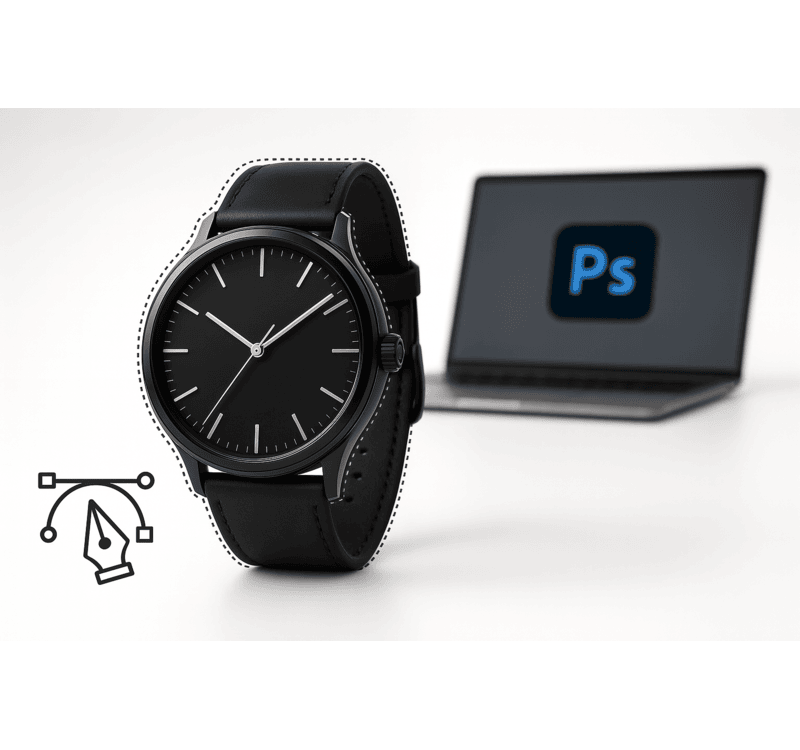How to Improve Product Photos with Clipping Path Services
Improving product photos with clipping path services means using a precise image editing technique to remove or replace the background around an object. This process helps create clean, sharp visuals that highlight the product without distractions.
In today’s digital marketplace, high-quality product images are essential across industries like e-commerce, advertising, and publishing. Clear and consistent visuals not only attract attention but also build trust with potential customers. Using clipping path services ensures that product photos meet professional standards, making them more effective for both online and print use. This technique plays a key role in modern visual marketing strategies.
How to Improve Product Photos with Clipping Path Services
Clipping path services help improve product photos by removing backgrounds and isolating objects with clean, sharp edges. This process allows editors to place products on any background or maintain consistency across multiple images. Businesses that rely on product photography, especially in e-commerce, fashion, and print advertising, use these services to enhance visual clarity and maintain brand uniformity.
These services involve drawing a vector path around the subject of an image to separate it from its background. Once isolated, the product can be edited, repositioned, or enhanced with shadows and reflections. Using clipping path services ensures accuracy and visual appeal, particularly when working with large volumes of images.
Understanding the Clipping Path Process

A clipping path is created using a photo editing tool like Adobe Photoshop. The editor uses the Pen Tool to trace the edges of a product manually. This path forms a boundary that defines what part of the image remains visible.
Depending on the object’s complexity, clipping paths are categorized into different levels:
- Basic Clipping Path – For simple shapes with straight or curved edges.
- Complex Clipping Path – For products with holes, curves, or detailed shapes like jewelry or machinery.
- Multiple Clipping Paths – For separating different parts of a product (e.g., color-correcting separate areas).
This manual approach allows precise editing, unlike automated tools that may blur edges or miss fine details.
Why Clipping Path Services Are Used in Product Photography
High-quality visuals are essential for digital and print media. Clipping path services contribute to better images by:
- Ensuring a uniform background for catalog or e-commerce platforms.
- Highlighting product details without background distractions.
- Improving layout flexibility in design or promotional material.
- Speeding up batch editing in professional workflows.
These services are often paired with image retouching, background replacement, and shadow effects for a polished final result.
Key Benefits and Techniques of Clipping Path Services

Clipping paths are valued for their accuracy and the control they give over image presentation. Below are common techniques and benefits used in editing workflows:
Common Techniques:
- Manual Pen Tool Pathing – Ensures precise edges for any object.
- Layer Masking – Helps refine transparent or soft edges.
- Alpha Channel Masking – Used for objects with fine details like hair or fur.
- Shadow and Reflection Addition – Enhances realism and depth.
Benefits:
- Clear background removal
- Consistent product display across images
- Easier editing of product color and lighting
- Better visual quality for web and print
These techniques are essential for industries where product image consistency and accuracy are critical.
When to Use Advanced Clipping Path Methods

In some cases, standard clipping paths are not enough. For images involving glass, fabric, or detailed surfaces, advanced methods like image masking, ghost mannequin editing, or multi-layer pathing are more effective. These techniques are often required in fashion photography, electronics, or automotive product shoots.
Using the right method depends on:
- The edge complexity of the subject
- The level of transparency involved
- The editing goals (e.g., color change, background swap)
Pros and Cons of Clipping Path Services for Product Photography
| Aspect | Pros (✔) | Cons (✘) |
|---|---|---|
| Image Quality | ✔ Enhances visual clarity with clean, sharp edges | ✘ May require additional retouching for perfect results |
| Background Flexibility | ✔ Allows easy background removal or replacement | ✘ Complex backgrounds need advanced techniques, increasing time |
| Consistency | ✔ Ensures uniform look across product images | ✘ Consistency depends on editor skill, varying with provider |
| Time Efficiency | ✔ Speeds up batch editing for large volumes of images | ✘ Manual editing can be time-consuming for complex objects |
| Cost | ✔ Cost-effective for bulk orders, starting as low as $0.20 per image | ✘ Advanced clipping paths (e.g., for jewelry) can be expensive |
| Professional Appeal | ✔ Creates polished, professional visuals for e-commerce and advertising | ✘ Over-editing may make images look unnatural if not done carefully |
| Versatility | ✔ Suitable for various industries (e-commerce, fashion, publishing) | ✘ Limited effectiveness for very fine details like hair or fur |
| Editing Control | ✔ Precise isolation of objects for further edits like color correction | ✘ Requires skilled editors to avoid errors in path creation |
Conclusion
Improving product photos with clipping path services involves the precise removal of backgrounds to create clean, focused images. This article covered how clipping paths work, their common techniques, and their use in industries like e-commerce, advertising, and publishing. Key benefits include improved image consistency, better visual quality, and greater editing flexibility.
In today’s image-driven market, well-edited product photos are essential for clear communication and professional presentation. How to improve product photos with clipping path services remains a valuable practice for businesses that depend on high-quality visuals to represent their products accurately. As digital content continues to grow, this editing method plays a vital role in maintaining visual standards across platforms.
Frequently Asked Questions About Clipping Path Services
1. What is a clipping path in product photography?
A clipping path is a photo editing technique that uses a vector path, typically drawn with Adobe Photoshop’s Pen Tool, to isolate a product from its background. It creates clean, sharp edges, making it ideal for e-commerce, fashion, and advertising. This process ensures products stand out with professional visuals, enhancing customer trust and sales.
2. How much do clipping path services cost?
Costs vary based on image complexity and provider. Basic clipping paths start at $0.20–$1 per image, while complex paths (e.g., for jewelry) may cost $5–$10. Many providers offer bulk discounts or free trials. Check with services like Path Edits or DigiTexx for quotes.
3. How long does it take to complete clipping path editing?
Turnaround times depend on the provider and project size. Standard delivery ranges from 12–48 hours, but urgent services can deliver in as little as 6 hours. For example, Offshore Clipping offers fast packages for quick edits. Always confirm timelines with your provider.
4. When should I use clipping paths vs. image masking?
Clipping paths work best for objects with clean, defined edges, like electronics or clothing. Image masking is better for complex details, like hair or fur, requiring soft edges. For intricate products, providers like Graphic Design Eye combine both for flawless results.
5. Can clipping path services handle complex product images?
Yes, advanced clipping path techniques, like multi-layer paths, can isolate intricate objects like jewelry or machinery. Skilled editors use manual pathing for precision, ensuring clean cutouts even for complex shapes. Services like Clipping Path Studio specialize in such tasks.
Suggested Reads
1. Benefits of Using a Professional Clipping Path Service
Discover how professional clipping path services can transform your product photos with crisp edges and clean backgrounds, boosting your e-commerce and marketing visuals. Learn why outsourcing to experts like Pixc Retouch ensures precision and professionalism for your brand.
2. Clipping Path vs Image Masking: When to Use Which
Confused about choosing between clipping path and image masking? This guide breaks down their differences, helping you decide the best technique for your product images, especially for complex details like hair or fur.
3. Clipping Path Service for E-commerce
Elevate your online store with stunning product images. Explore how clipping path services create polished, distraction-free visuals that attract customers and drive sales on platforms like Amazon and Shopify.
4. Clipping Path Service Provider
Looking for a reliable clipping path service? Find out why Pixc Retouch stands out with fast, high-quality edits and a variety of options tailored for e-commerce, photography, and advertising needs.




